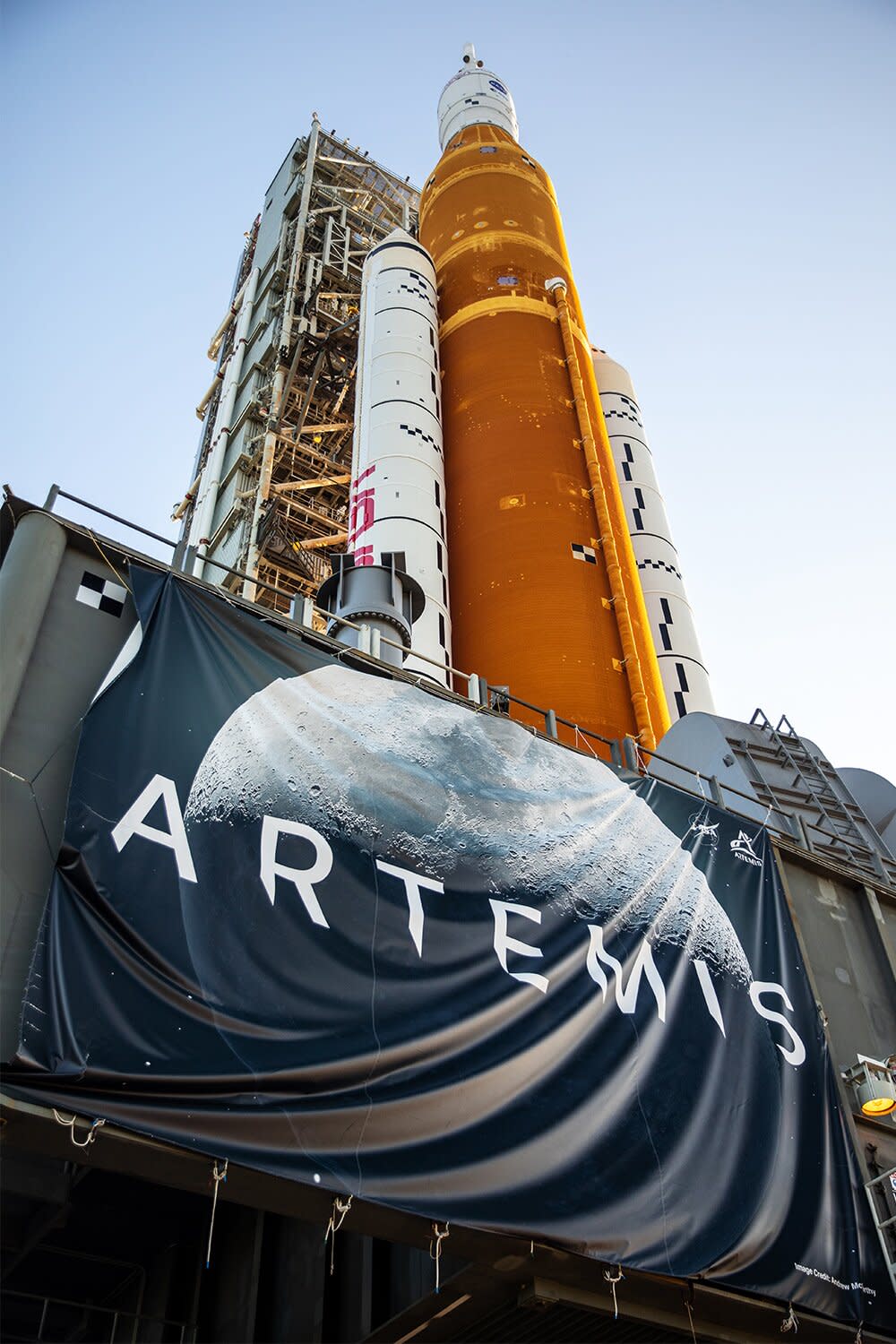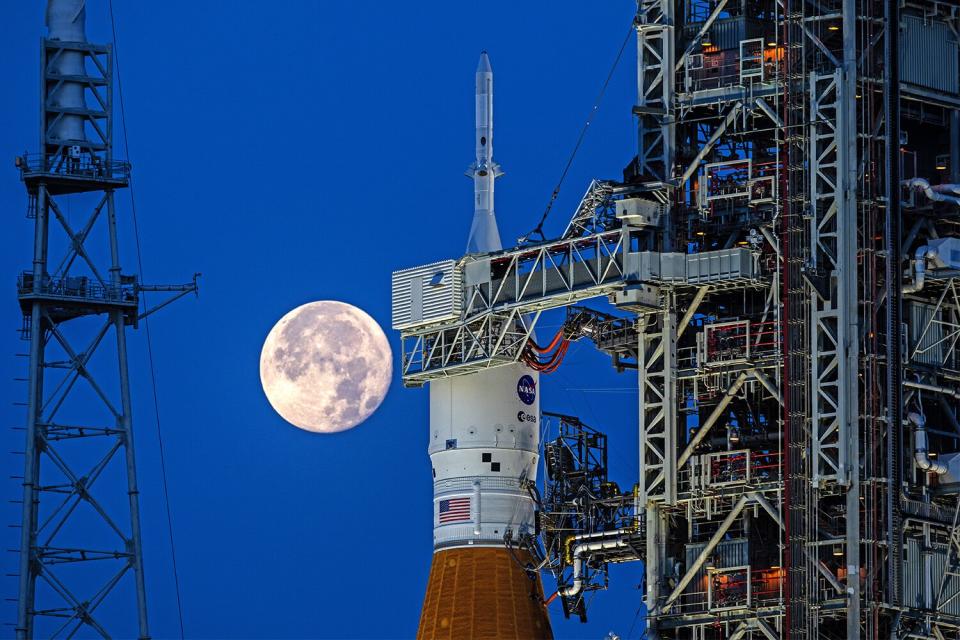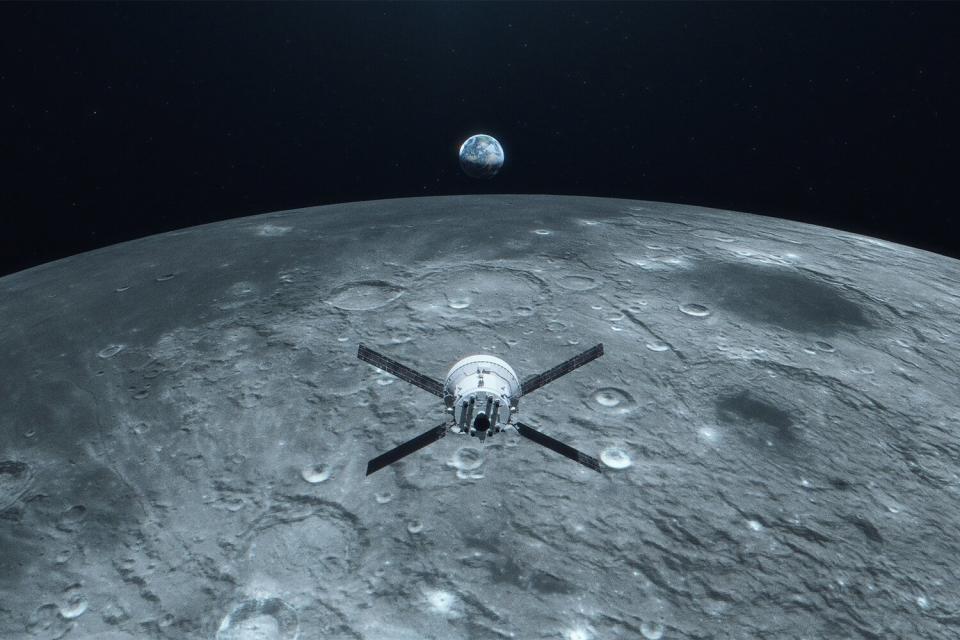All About NASA's Artemis I Mission, Including How to Watch the Mega Rocket Launch to the Moon

The countdown to NASA's Artemis I mission has begun!
In just a few days, a mega moon rocket will blast off into the sky, marking the first in a series of planned launches.
Titled the Space Launch System, the vehicle is the most powerful rocket the space agency has ever built. The upcoming Artemis mission will signify its first launch since NASA began its development in 2011.
But that's not the only vehicle headed out of this world at the end of this month. The Orion, a partially reusable crewed spacecraft, will accompany the uncrewed SLS rocket on the monumental journey.
RELATED: Everything to Know About the Full Moons in 2022
While the rocket will whiz out 280,000 miles from Earth and thousands of miles past the moon over the course of roughly three weeks, the Orion will remain in space for a duration "longer than any ship for astronauts has done without docking to a space station and return home faster and hotter than ever before," per NASA.
The purpose of the Artemis mission is to pave the way for a long-term, sustainable lunar presence — while also serving as a foundation to eventually send astronauts to Mars, in addition to the moon.
From when and how to watch the rocket ship launch to the celebrity guests taking part in the festivities, here's everything to know about the Artemis I mission.
What is the Artemis I mission?

Ben Smegelsky/NASA
The Artemis I mission is the first in NASA's series of "increasingly complex" trips into space and around the moon. The flight test will be uncrewed and serve as a steppingstone for future human space exploration.
Furthermore, the mission strives to "demonstrate [NASA's] commitment and capability to extend human existence to the Moon and beyond," per the space agency. The Space Launch System rocket and the Orion spacecraft are the two vehicles leaving Earth.
RELATED: NASA Offers to Fly Your Name Around the Moon on Upcoming Artemis I Mission

Ben Smegelsky/NASA
Artemis III will be the first of the series' missions to bring astronauts into space, slated to take place at a later launch date (predicted for 2024). This project will mark the first time NASA has sent humans to the Moon since the Apollo in December 1972.
The mission will be groundbreaking in more ways than one because come round three, NASA will land the first woman and the first person of color on the Moon in its long-term plan to inspire through discovery.
When is the Artemis I launch?

Liam Yanulis/NASA
Liftoff of NASA's mega Moon rocket and the Orion spacecraft was originally slated for 8:33 a.m. ET on Monday, Aug. 29, 2022 and depart from the Launch Complex 39B at NASA's Kennedy Space Center in Florida.
But due one of the rocket's four engines experiencing an unsuccessful bleed test prior to the launch, NASA has postponed the event. Now, a two-hour window has been scheduled for Friday, Sept. 2. Its mission will last 42 days and return on Oct. 11, according to CNN.
If not, the next launch window is scheduled for 90 minutes on Monday, Sept. 5, which would result in a return on Oct. 17.
"We don't launch until it's right," NASA administrator Bill Nelson said in a livestream shared on NASA's Twitter page Monday. "It's just illustrative that this is a very complicated machine, a very complicated system, and all of those things have to work. You don't want to light the candle until it's ready to go."
RELATED: NASA Scrubs Planned Launch for Artemis I Mission to the Moon Due to Engine Issue
Will any celebrity guests participate in the Artemis I launch?

Vivien Killilea/Getty; Mike Marsland/WireImage; Mike Marsland/WireImage
To celebrate the major accomplishment that's soon to take place, NASA is going all out with festivities pre-launch, day-of launch and post-launch on-site and via a livestream.
The space agency has a lineup of star-studded guests for the event, including Jack Black, Chris Evans and Keke Palmer, though it hasn't been confirmed if they'll be participating in-person or virtually.
Additionally, Josh Groban and Herbie Hancock will perform "The Star-Spangled Banner" while the Philadelphia Orchestra and cellist Yo-Yo Ma will play a rendition of "America the Beautiful."
RELATED: Elon Musk's SpaceX Wins $2.9B Contract to Help NASA Land Astronauts on the Moon by 2024
How to watch the Artemis I launch?

Ben Smegelsky/NASA
The launch broadcast will begin on NASA Television at 6:30 a.m. ET on Monday, Aug. 29, and be carried on the agency's website, as well as YouTube, Twitter, Facebook, LinkedIn, Twitch, Daily Motion, Theta.TV, and NASA's App.

